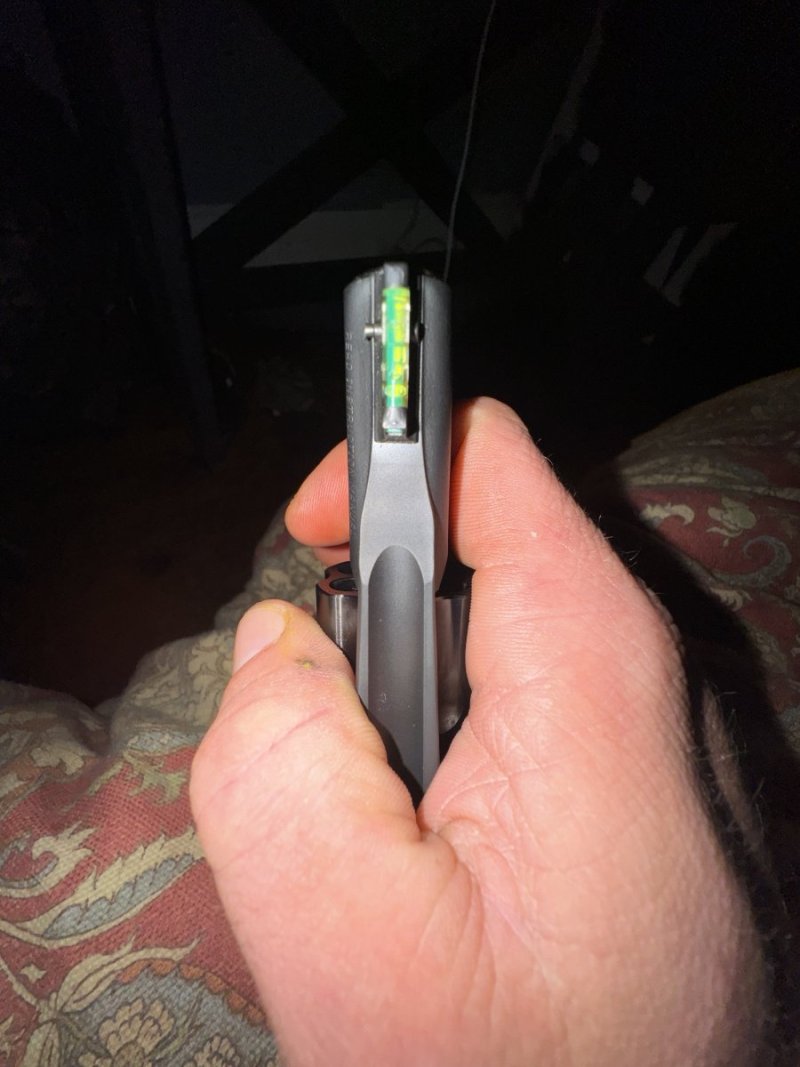All the early Stevens Boys/Bicycle Rifles were inexpensive to own and inexpensively made. The Favorite is no exception in any original caliber. Folks to this day persist in chambering them for small centerfires and 22 Magnum and even now, the hot 17s. Big mistake in my opinion. Of the suitable rimfires, only the 22 LR is still readily available and suitable for the action.
As previously indicated, the action relys on two pins and a binding or overcenter relationship between the pinned parts for its lock up strentgh. As such, a well fitted action will snap shut and stay shut when fullcocked. It requires an unbinding or snap to reopen. When they are worn, and in 22 LR, the fingers of the shooting hand do double duty holding the action closed by the lever during fireing. There are two fixes. Both implemented by the factory, both dooable at home. Replace the worn pins with snug fitting new ones of lasalle steel or drill rod. Add a compression spring and plunger to a cavity drilled into the lever boss. The latter is much harder, even the factory only reserved this fix for a few of the rifles refitted when loose...as such, I've only ever seen two of the spring loaded levers in my life. One is fitted on a buddies rifle now. One is fitted on my mothers Curly Maple stocked 1894 favorite. The addition of the spring is a neat long lasting repair and if I had a mill, I'd attempt it here. But, usually, a simple set of new and well fitted pins is sufficient.
So, 100 year old pins to the left. New pins of drill rod to the right. Both pins were clipped long and finished on the ends in a drill press with a file. Each of the corresponding holes in the breech block and lever measured .150". The drill rod measured .154". A bit of polish was all that was needed to fit the new pins to a thumb push fit in the breech block and lever. (Incidentally, the original pins measured all over the place, about .135" at the largest...plenty worn and loose.) Final dress the pins to length so they are no wider installed than the part they are fitted to...

The new pins installed....they will be staked in place after final refinishing. For now, an aluminum drift (nail!!!) is used to pess them in and out.

Once the new tightened up guts are reinstalled, the lever in fact snaps shut, stays shut when fullcocked and gives a snap when opened. So, another good repair on another good old rifle, just the way J Stevens Arms Co refitted them way back when.
Gettin close now. A test fire. A decision on whether the extractor can remain as is (tip is a bit rough) and then its all about the refinishing.
As previously indicated, the action relys on two pins and a binding or overcenter relationship between the pinned parts for its lock up strentgh. As such, a well fitted action will snap shut and stay shut when fullcocked. It requires an unbinding or snap to reopen. When they are worn, and in 22 LR, the fingers of the shooting hand do double duty holding the action closed by the lever during fireing. There are two fixes. Both implemented by the factory, both dooable at home. Replace the worn pins with snug fitting new ones of lasalle steel or drill rod. Add a compression spring and plunger to a cavity drilled into the lever boss. The latter is much harder, even the factory only reserved this fix for a few of the rifles refitted when loose...as such, I've only ever seen two of the spring loaded levers in my life. One is fitted on a buddies rifle now. One is fitted on my mothers Curly Maple stocked 1894 favorite. The addition of the spring is a neat long lasting repair and if I had a mill, I'd attempt it here. But, usually, a simple set of new and well fitted pins is sufficient.
So, 100 year old pins to the left. New pins of drill rod to the right. Both pins were clipped long and finished on the ends in a drill press with a file. Each of the corresponding holes in the breech block and lever measured .150". The drill rod measured .154". A bit of polish was all that was needed to fit the new pins to a thumb push fit in the breech block and lever. (Incidentally, the original pins measured all over the place, about .135" at the largest...plenty worn and loose.) Final dress the pins to length so they are no wider installed than the part they are fitted to...

The new pins installed....they will be staked in place after final refinishing. For now, an aluminum drift (nail!!!) is used to pess them in and out.

Once the new tightened up guts are reinstalled, the lever in fact snaps shut, stays shut when fullcocked and gives a snap when opened. So, another good repair on another good old rifle, just the way J Stevens Arms Co refitted them way back when.
Gettin close now. A test fire. A decision on whether the extractor can remain as is (tip is a bit rough) and then its all about the refinishing.

































